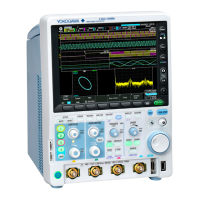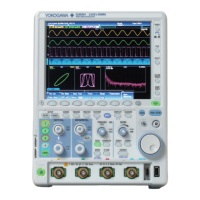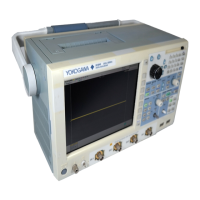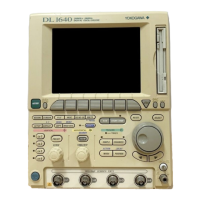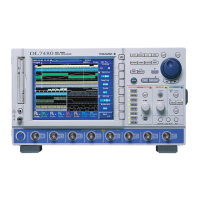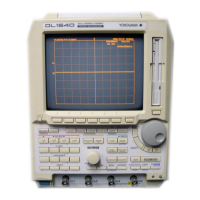App-9
Time Windows
You can select from rectangular, Hanning, or flattop time windows.
The rectangular window is best suited to transient signals, such as impulse waves, which attenuate completely
within the time window. The Hanning and flattop windows allow continuity of the signal by gradually attenuating
the parts of the signal located near the ends of the time window down to the 0 level. Hence, they are best suited
to continuous signals. The Hanning window provides a higher frequency resolution compared to the flattop
window. However, the flattop window has a higher level of accuracy. When the waveform being analyzed is a
continuous signal, consider the above characteristics in selecting the proper window to be applied.
T
T
T
T
t
Sine wave
Time window Integral Power spectrum
Rectangular
Hanning
Rectangular
Hanning
Flat top
: W(t) = u(t) – u(t – T) U(t): Step function
: W(t) = 0.5 – 0.5cos(2 )
: W(t) = {0.54 – 0.46cos(2 )}
T
T
Flat top
t
T
t
T
sin{2 (1 –
Notes When Executing the FFT Computation
Computation is normally performed on the sampled data in the acquisition memory. However, for waveforms
that have been acquired in envelope mode, computation is performed on the maximum and minimum values per
acquisition interval.
Appendix

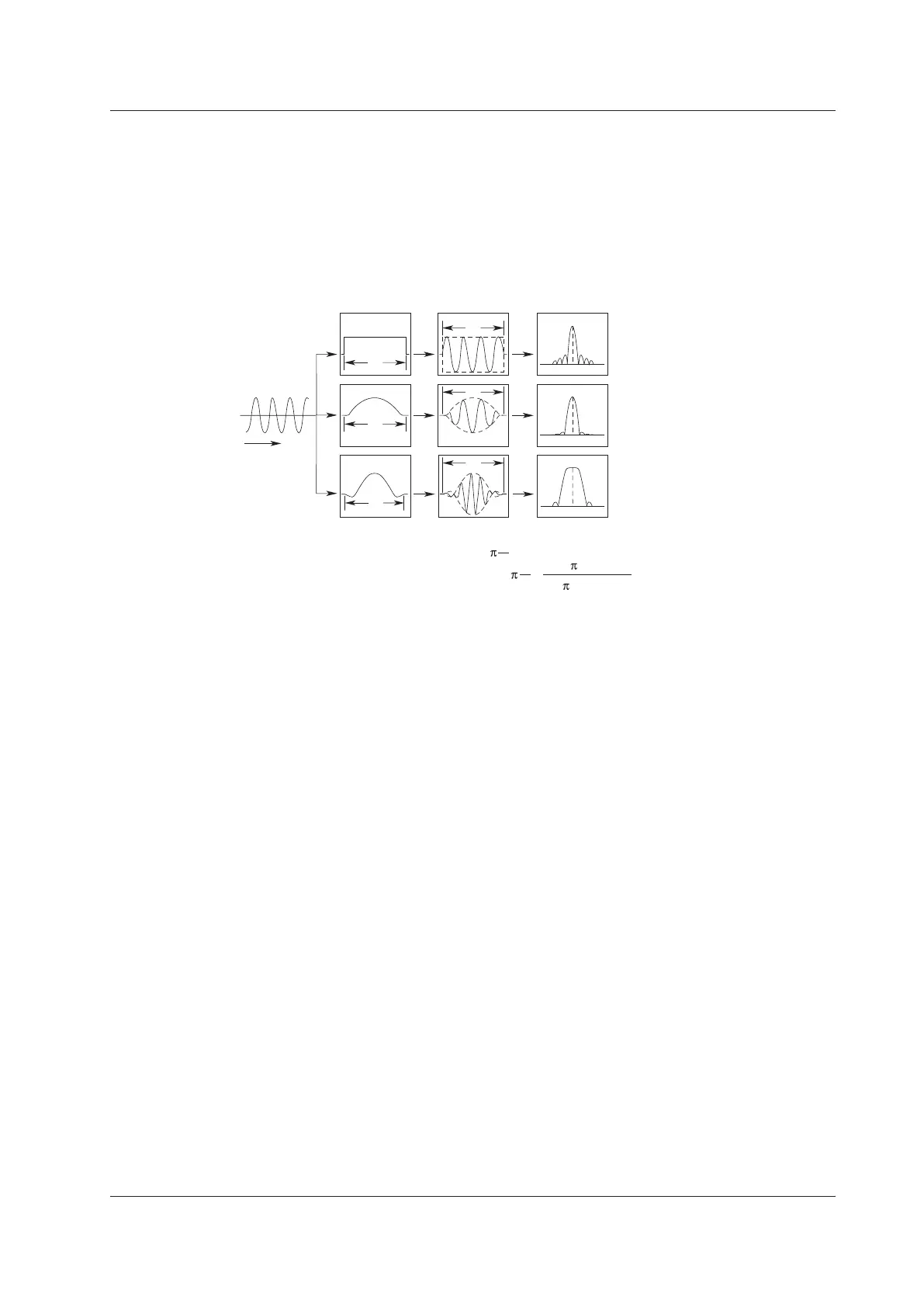